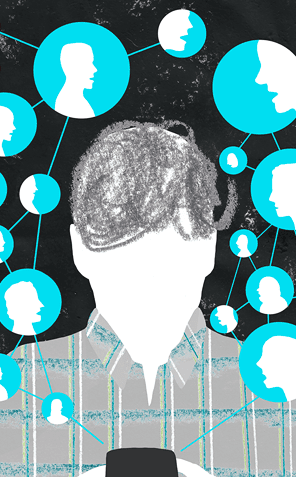Crowdsourcing can create an artificial chat partner that’s smarter than Siri-style personal assistants.
Personal assistants such as Apple’s Siri may be useful, but they are still far from matching the smarts and conversational skills of a real person. Researchers at the University of Rochester have demonstrated a new, potentially better approach that creates a smart artificial chat partner from fleeting contributions from many crowdsourced workers.
Crowdsourcing typically involves posting simple tasks to a website such as Amazon Mechanical Turk, where Web users complete them for a reward of a few cents. The tasks are often simple, repetitive jobs that are easy for humans but tough for computers, such as categorizing images. Crowdsourcing has become a popular way for companies to handle such tasks, but some researchers, including the group at Rochester, believe it can also be used to take on more complex tasks.
When people talk to the new crowd-powered chat system, called Chorus, using an instant messaging window, they get an experience practically indistinguishable from chatting with a single real person. Yet behind the scenes, each response is the result of tens of people paid a few cents to perform small tasks: including suggesting possible replies and voting for the best suggestions submitted by other workers.
Tests where Chorus was asked for travel advice showed that it could be smarter than any one individual in the crowd, because around seven people were contributing to its responses at any one time. Helpers built this way might also be cheaper than paying a conventional one-on-one assistant. “It shows how a crowd-powered system that is relatively simple can do something that AI has struggled to do for decades,” says Jeffrey Bigham, an assistant professor at the University of Rochester, and a member of the research team that created Chorus. Bigham jokes that Chorus is more likely to pass a Turing Test, which challenges an artificial intelligence system to fool someone into thinking it’s human, than conventional chat software, although it may not meet most definitions of artificial intelligence.
In trials of the system, people asked Chorus for advice on restaurants to visit in Los Angeles and New York, and quickly received suggestions. Feedback such as “Hmm. That seems pricey,” was quickly taken on board by the crowd, which came up with an alternative. AI systems such as Siri typically have difficulty following this kind of back-and-forth conversation, particularly in colloquial language.
Bigham worked with Rochester colleagues Walter Lasecki and Rachel Wesley, and Anand Kulkarni, the cofounder of crowdsourcing company MobileWorks (see “Human Workers, Managed by an Algorithm“). Their goal was to find a new way to increase the power of crowdsourcing, which is typically limited to simple, isolated tasks, such as adding labels to image files. “What we’re really interested in is when a crowd as a collective can do better than even a high-quality individual,” says Bigham, by combining work on many simple tasks into a coherent, complex whole.
via Technology Review – Tom Simonite
The Latest Streaming News: Artificial Intelligence updated minute-by-minute
Bookmark this page and come back often
Latest NEWS
Latest VIDEO








